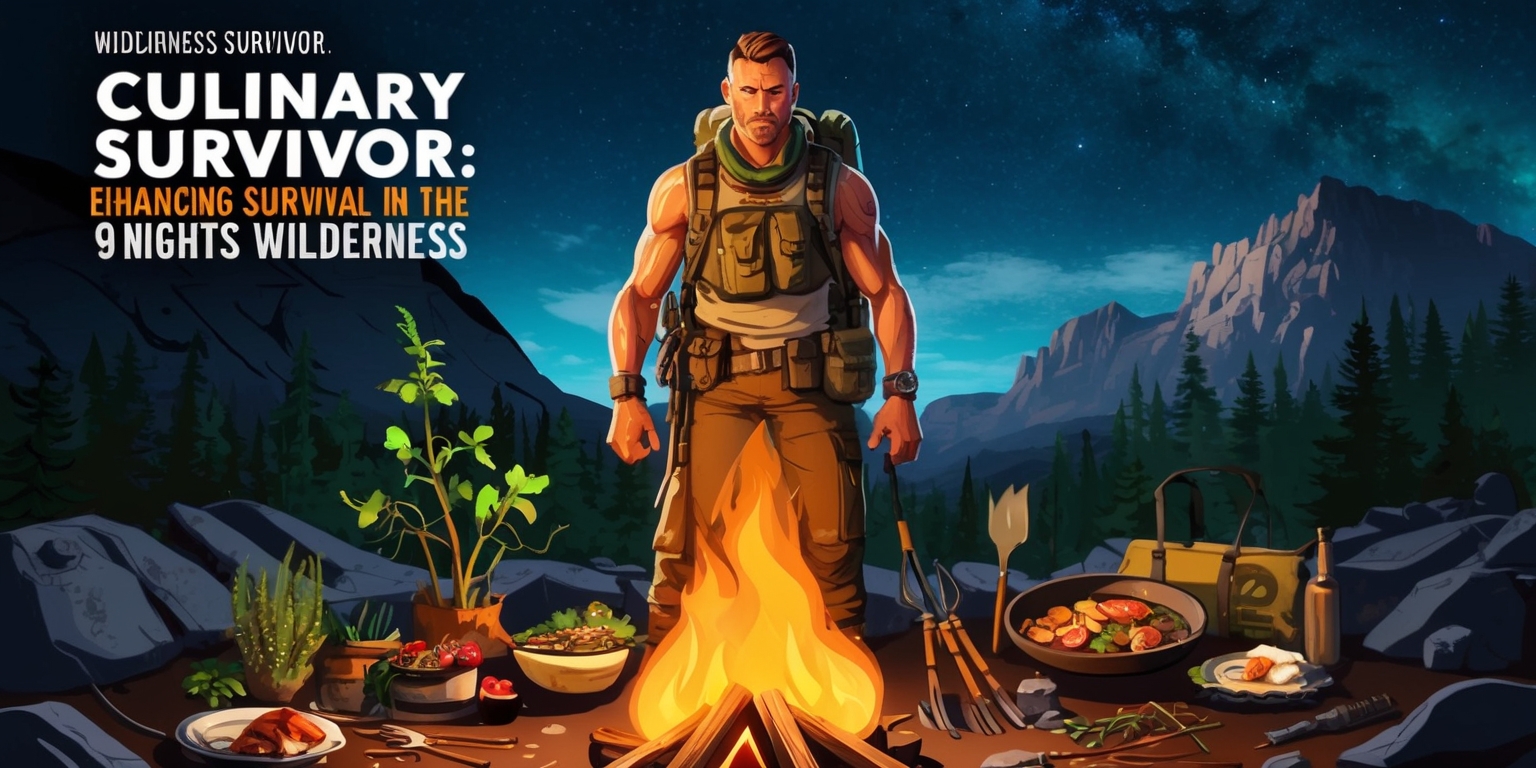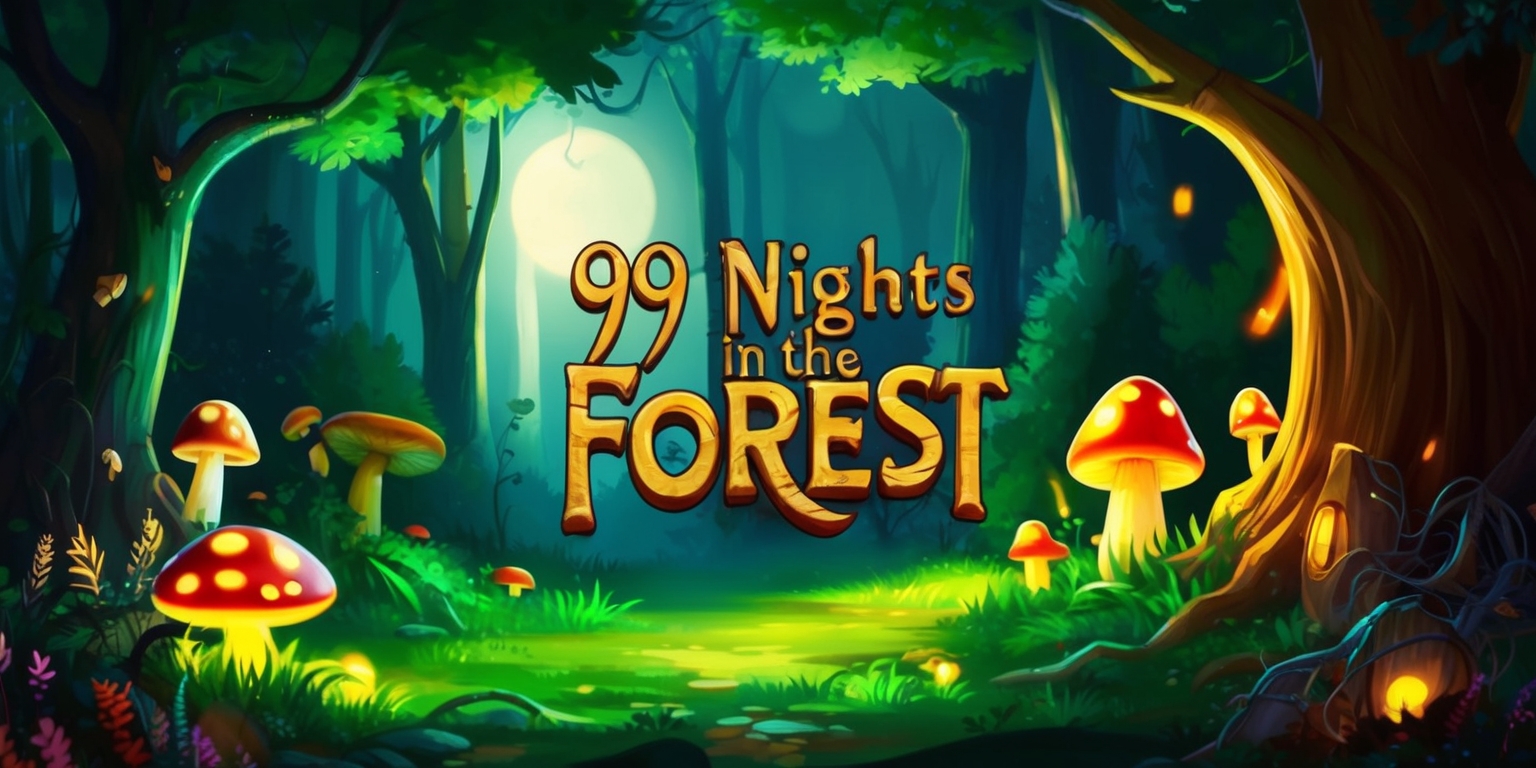Culinary Tactics: Enhancing Survival in the 99 Nights Wilderness
Nov-20-2025

The vibrant, immersive world of 99 Nights in the Forest unfolds as players embrace multifaceted roles that demand a blend of tactical acuity, culinary creativity, and dedicated teamwork. Within the game’s dynamic environment, each class contributes crucial skills to ensure survival, and one of the central figures is the Chef. As a support character, the Chef’s ability to infuse the team with enhancements through specially crafted recipes transforms the course of gameplay. The integration of culinary arts into survival strategy elevates the importance of resource management, strategic timing, and group coordination, making the Chef an indispensable part of any team effort. Embarking on missions, players must navigate complex decisions that center around nourishment, restoration, and strategic advantages – all delivered through the art of cooking in a forest where every night counts.
Role Coordination and Culinary Strategy
The game’s emphasis on teamwork is exemplified through the Chef’s pivotal role in providing essential buffs and nourishment. Balancing offensive and defensive maneuvers, the Chef’s primary focus is to support the group with both sustenance and restorative benefits, enhancing the team’s endurance in the wilderness. Crafting various recipes, from hearty steaks to nourishing soups, the Chef uses ingredients that not only quench hunger but also provide boosts to health and agility. The choice of recipes must be driven by the unfolding scenarios—whether the need is to empower a night expedition or to fortify fellow survivors before an arduous journey. By merging tactical food preparation with active participation, players learn to value the interdependent nature of survival where every contribution is critical to overcoming challenges in the forest.
Unlocking and Advancing the Culinary Role
The process of unlocking the Chef class involves a deliberate investment and a keen understanding of the class's long-term potential on the battlefield and beyond. To transform a regular survivor into a master of culinary arts, players must invest 150 Diamonds, symbolizing both commitment and in-game resource management. Once unlocked, the Chef is equipped with a dedicated Chef's Station Blueprint—a versatile cooking pot that allows for the preparation of numerous recipes. Alongside this, the Recipe Book is introduced, offering an evolving collection of meals that upgrade in potency as the Chef’s level increases. This progression mechanism reinforces the idea of growth through continuous engagement. Players who master the path of upgrading recipes not only enhance their own capabilities but dramatically bolster the team’s overall effectiveness during critical in-game scenarios.
The Impact of Chef's Station Blueprint
Central to the Chef’s toolkit is the Chef's Station Blueprint, which serves as both a symbol and a functional asset in the gameplay. This large cooking pot is where the magic happens—a carefully designed mechanism that allows the Chef to combine various ingredients to create meals with diverse effects. Whether crafting seafood chowder to replenish hunger or conjuring up a carrot cake to enhance night vision, the Chef’s station acts as a hub of domestic power. The blueprint encourages strategic thinking about ingredient storage and the overall flow of resources during missions. Integrating this object into the gaming experience emphasizes the narrative of preparation and precise timing required to secure survival in a forest where effects like reduced hunger, enhanced speed, or increased health could delineate the fine line between survival and danger.
Resource Gathering and Ingredient Management

Successful gameplay in 99 Nights in the Forest heavily relies on efficient resource gathering and the meticulous management of ingredients required for each recipe. The significance of stocking a diverse range of items is underscored by the necessity of feeding both the Chef’s creative needs and the nutritional demands of the survival team. Ingredients such as seafood, steak, pumpkin, ribs, carrots, and even jellyfish are instrumental in crafting meals that offer a variety of enhancements—from overcoming the cold to maintaining health and speed. Encouraging players to adopt a strategic outlook, the game hints at the benefit of having team members like Hunter, Fisherman, and Farmer, whose continuous acquisition of resources can create a self-sustaining supply chain. This resource management layer deepens the game’s strategy and underscores the relevance of every role on the team.
Strategic Culinary Combinations
The array of recipes available to the Chef requires players to engage in thoughtful culinary combinations to maximize the benefits bestowed upon the team. Recipes like Steak Dinner, known for efficiently feeding teammates from the first level onwards, or Carrot Cake, which provides exceptional night vision and health enhancements, demand precise resource allocation. Players must weigh the immediate needs of the group against the longer-term benefits that various dishes offer, ensuring that each culinary choice contributes to the broader survival strategy. With options to heal, boost speed, or restore substantial hunger levels, the focus remains on how each concoction can directly influence the outcomes of dangerous encounters and exhaustive trails. In this regard, the Chef’s role develops into a critical balancing act between reactive remedy and proactive safeguard, transforming each meal into a tactical asset.
Integrating Culinary Skills with Team Dynamics
One particularly captivating element of the game is the interplay between culinary skills and broader team dynamics. The Chef does not operate in isolation but must be in sync with teammates who are busy exploring, gathering, and engaging with the environment. Each recipe crafted in the Chef's Kitchen holds the potential to turn the tide during strenuous encounters, whether by providing crucial speed boosts or replenishing ever-dwindling hunger meters. This integration of culinary precision with combat readiness and exploration tactics forces teams to communicate and plan collaboratively. The tactical distribution of prepared dishes among team members becomes a subtle dance of resource management and quick decision-making during combat or exploration phases, making teamwork indispensable for long-term survival in the challenging forest landscape.
Functional Elements of the Recipe Book
The Recipe Book is an integral element in manifesting the Chef's capabilities and is a dynamic tool that enhances gameplay as it upgrades concurrently with the character. This constantly evolving book provides players with a structured framework for unlocking more potent recipes, where every page turned means a new advantage for the team. The book’s evolving nature symbolizes the improving expertise and the layering of advanced culinary techniques, adding a rich narrative of progression and mastery. As the Chef’s level increases, so too does the potential for creating meals that not only feed but also empower teammates with boosted defense, unprecedented night vision, or rapid healing. This interactive progression system underscores the significance of growth and adaptation in a world where every battle is fought on both literal and nutritional fronts.
Experiencing Culinary Craftsmanship Aesthetically
The graphical and interactive presentation of the Chef’s preparations enriches the overall experience, merging aesthetics with functionality. The visual design of the Chef's Station Blueprint, with its robust, inviting cooking pot and meticulously animated ingredient interactions, creates an immersive culinary environment within the game. The animations – from the stirring of a bubbling stew to the careful placement of vegetables – not only enhance realism but also convey the urgency and importance of every meal prepared. Designed to pique the senses, these aesthetic qualities transform routine gameplay into a visual delight that celebrates creativity. Each recipe prepared is showcased with dynamic elements that tell a subtle story of survival, commitment, and the art of turning raw ingredients into tools of empowerment.
Unique Practical Applications of the Recipes
Diving deeper into gameplay, the practicality of the Chef's recipes is highlighted by their diverse utility in various scenarios. Whether it is the Seafood Chowder providing a hearty burst of energy or Jar o’ Jelly delivering an immediate, restorative effect along with an added speed advantage, each dish is designed to support the team in specific, tangible ways. The functional design of these recipes encourages players to employ them judiciously in diverse situations, from night explorations to emergency retreats. This strategic use of culinary creations means that, aside from reducing hunger, the dishes often serve as lifelines, compensating for environmental hazards or sudden depletions in health. The inherent versatility of these recipes mandates a rhythmic interplay of preparation, consumption, and teamwork amidst the challenging forest backdrop.
Collaboration Through Specialized Roles
The game's design naturally fosters an environment where specialized roles become critical to overall success, and the Chef stands out for his unique contribution. This specialization is grounded in the idea that while the Chef may not be at the forefront of combative action, the benefits of his culinary creations are indispensable when the situation turns dire. With teammates assuming the roles of Hunter, Fisherman, and Farmer, each is essential in ensuring a steady supply of necessary ingredients to support the Chef’s culinary ventures. Such a system reinforces a strong sense of interdependence, requiring players to maintain communication and coordination. The specialized roles not only diversify the gameplay but also Inspire players to explore a variety of tactical approaches and allocate responsibilities based on individual strengths, creating a synergistic environment where success is built on coordinated efforts.
Expanding the Horizons of Survival Tactics
Within the expansive universe of 99 Nights in the Forest, survival is not only about outlasting challenges; it is about evolving tactics through continual adaptation. The Chef’s role, in this regard, introduces a layer of strategic depth that complements the core survival mechanics. The decision-making process associated with accumulating, preserving, and deploying key ingredients becomes a tactical exercise that mirrors the constant threat of the environment. As the game unfolds, players often face critical junctures where choosing the right recipe in response to each evolving scenario can redefine survival chances. In this delicate balance, the intricate tapestry of culinary adjustments, group coordination, and real-time strategy blends seamlessly into a survival narrative where every moment is charged with deliberate planning and dynamic responses to the challenges of the forest.







